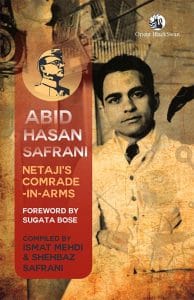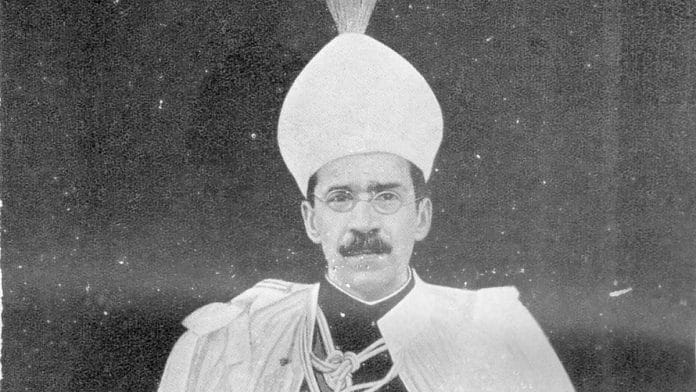The story of Hyderabadi freedom fighters is not complete without an account of the central role played by the women of Hyderabad. The Nizam of Hyderabad, Osman Ali Khan led the way in liberating them from the shackles of tradition. Apart from starting schools and colleges for girls, he brought the women of his own court out of purdah, thus setting an example for others to follow. These efforts at reform were instrumental in spreading modern education and thinking amongst women, and many rose in their turn to spread it amongst their peers.
Towering above the others were the twentieth-century pioneers Sughra Humayun Mirza and Tayyaba Begum Bilgrami. Both these women made significant strides towards the social upliftment of Hyderabad’s girls by making school and college education accessible to them. The Safdariya Girls High School founded by Sughra Humayun Mirza and Tayyaba Begum’s Anjumane Khawatin School are still running strong. The winds of education and social reform were travelling fast, and literary discussions were springing up outside of formal institutions too. Jamalunissa Begum Baji’s salon, for instance, was unique for the haven it provided for Leftists and progressive intellectuals of the Hyderabad State.
Fakhrul Hajia Begum, Abid Hasan’s mother, who had hitherto been confined to the domestic sphere, played a crucial role in raising national consciousness amongst women.
Fakhrul Hajia Begum was born to Persian parents in 1870.They moved from Bombay to Hyderabad when her father was appointed as calligrapher at the Government Printing Press. Outgoing and friendly at school, two of her classmates thought Fakhrul would make a suitable partner to their father, who had lost his wife. The same age as them, they also thought Fakhrul would make for good company. Fakhrul Hajia thus became the
third wife of Talukdar Amir Hasan.
Fakhrul Hajia and Amir Hasan had fourteen children. Though Persian by birth, she imbibed the syncretic culture of Hyderabad and became thoroughly Indianised of her own accord. She shed her burqa and took to wearing a sari, as seen in all her photographs. Apart from her mother tongue Farsi, her home language Urdu, English and a smattering of French, she also spoke several other Indian languages. As her husband was the district collector for several areas, the family travelled a lot, and Fakhrul picked up the regional languages along the way. She was often heard singing happily to herself in Marathi, Telugu or Kannada while grinding flour in the chakki.
Amir Hasan was known to be scholarly, introverted and a loyal civil servant. Fakhrul Hajia, however, was a strong-headed, strong-willed person, and often had views opposing those of her husband. She also had an open and sharp mind, and harboured virtually no prejudice. And she had a big say in the upbringing of her children. Most well-to-do Hyderabadi families at the time preferred to send their boys to Oxford, Cambridge or law schools in England for higher education and to prepare them for the Civil Service Examinations. Overruling her husband, Fakhrul Hajia sent her children to Germany instead. Her eldest son, Mehdi Hasan, took his Ph.D. from Leipzig, Jafar from Heidelburg, and Abid joined the Technische Hochschule for Engineering in Berlin. Khurshid had no choice but to come away when the war broke out.
During her educational years, Fakhrul Hajia made the acquaintance of Sarojini Chattopadhyay, who lived next door, in the house called ‘Golden Threshold’. Daughter of Aghornath Chattopadhyay, vivacious and extremely intelligent, Sarojini was nine years younger than Fakhrul. The two grew close and became lifelong friends. Sarojini (later, Naidu) was an integral part of th Hasan family. Sarojini and her daughter Padmaja maintained strong relationships with Fakhrul Hajia, until their deaths. Sarojini cogently articulated the need for righting the wrongs heaped on India by the British. She encouraged women all over the country to get actively involved in Gandhi’s ‘non-cooperation’ movement. She told them to be fearless in exercising their will and to fight tyranny in any form—homegrown or external. With her natural leadership, strong sense of justice and powerful oratory, young Sarojini soon became the feminine face of India’s struggle for freedom, and part of the inner circle of Gokhale and Gandhi.
It was inevitable that her patriotism and politics would influence her friends and peers. Fakhrul was deeply inspired by Sarojini, who emerged as one of the most prominent women nationalists in the Indian freedom struggle led by Gandhiji.
The country was going through a tremendous upheaval, with nationalists wanting to overthrow the British yoke. At a time that many Hyderabadis, particularly the aristocracy, wished to remain loyal to the British, Fakhrul Hajia’s pro-nationalist views were very strong and clear-sighted. As her involvement in the national movement increased, she switched over to wearing plain khadi saris and made her sons wear khadi clothes and caps. Her sons, who were already exposed to liberal ideas in Europe, readily took to the idealism of the then rising national leaders. When Gandhi’s call came to boycott British goods, the Hasan family was among the very first to respond.
Fakhrul the matriarch acted with zeal. Along with her sons and daughters, she went about Hyderabad asking neighbours and friends to part with whatever they could of their British clothes and expensive imported accessories. All these were brought and piled up in the grounds of her home ‘Abid Manzil’. The collection soon grew into a hill. With a British formal hat and a British-made walking stick perched right on top, the pile was then set ablaze, marking 1925 as one of the most momentous years in Fakhrul’s life. Several prominent citizens of Hyderabad came to witness the bonfire.
High up in the Residency, the British Resident of Hyderabad saw the flames, and was incensed when he learnt of the huge bonfire at Abid Manzil that had become the talk of the town. He summoned Amir Hasan, who worked for the Nizam’s government, rebuked him, told him to stop this nonsense at once and ensure that no such activity was repeated.
Amir Hasan returned home and told his wife about the Resident’s reprimand, asking her to ‘Please restrain the children’.
Fakhrul responded by saying, ‘Sarkar, this is my house. My father gave it to me. And my children are free to do as they please.’ Her strong, albeit brusque words are a family lore to this day. Fakhrul Hajia (Begum Amir Hasan) came to be universally known as ‘Ammajan’. Even leaders of the stature of Mahatma Gandhi, Jawaharlal Nehru, Subhas Chandra Bose, Abul Kalam Azad and Zakir Husain knew her by that name.
 This excerpt from Abid Hasan Safrani’s Netaji’s Comrade-in-Arms has been published with permission from Orient Black Swan.
This excerpt from Abid Hasan Safrani’s Netaji’s Comrade-in-Arms has been published with permission from Orient Black Swan.






